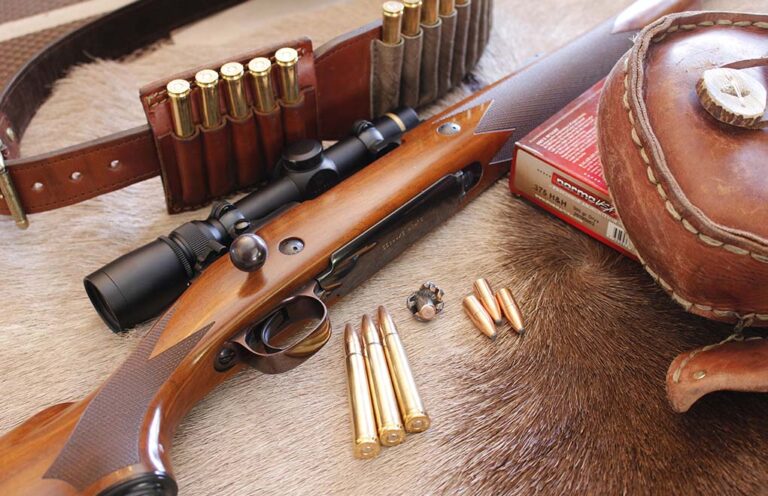
We all have our dream guns, but these are the ones no self-respecting gun owner should ever be without.
This scene has played out innumerable times. A new shooter or hunter is at a campfire or gun counter, going down the rabbit hole we all know well. A question arises, which gun should I get next?
My answer is the list below, 10 guns everyone should experience at some point. However, before you get your pitchforks sharpened and torches lit, this isn’t a list of firearms you need for the rest of your life (though you would be well-armed). Think of this as 10 guns you need to get your hands on at some point simply because they are timeless classics.
1. A Well-Built AR-15

Eugene Stoner blessed us with an absolute classic when he designed the M16/AR-15 platform many years ago. While hundreds of manufacturers have produced the AR in many different iterations, the spectrum is broad and varied. It has been chambered in many different calibers, so I’m referring to a good-quality carbine or rifle variant in .223/5.56 NATO chambering.
What makes the AR-15 so handy? It’s lightweight, easy to operate and maintain, and it shoots cheap ammo. From a self-defense standpoint, my AR-15 is the first gun I grab when things go bump in the night. With a standard-capacity magazine of 30 cartridges, it’s serious firepower and relatively low recoil for faster follow-up shots. If you told me I could only have one rifle, it would likely be a well-built AR-15 in .223/5.56. Is it the perfect cartridge for taking big game in North America? Absolutely not. Much has been written about shot placement and bullet construction, but I can say that I have taken many whitetails in America and springboks in Africa with this chambering.
Note that I said good quality. There are a lot of great manufacturers, such as FN, Colt, Cobalt Kinetics, Knights Armament Corp., Barrett and Noveske. You can’t go wrong with any of these.
The popularity of the AR-15 in America is a double-edged sword. On the one hand, the platform is so modular that most people can build one in the garage. This is fantastic from a modularity standpoint because a rifle that is perfectly set up for me might be the complete opposite of what might work for you regarding trigger, barrel, stock, gas system, etc. On the other hand, this ease of building leads to some manufacturers putting together the cheapest parts they can source to sell to the consumer.
You want a name brand with a reputation for reliability, accuracy, and quality fit and finish. You don’t want a random, cobbled-together rifle you bought at a gun show the morning after a few dudes with a garage FFL slapped it together after polishing off a six-pack. It seems like every election cycle many new AR-15 manufacturers appear out of nowhere. Some are good; others are not so great.
Backup/alternate: Ruger Mini-14—If you live in one of the “ban” states, get a standard Ruger Mini-14 in 5.56/223. While some question this rifle’s accuracy, the current production will hang with any off-the-shelf AR-15 variants at the same price point. How accurate? You will still hit a man-sized torso steel target out to 400 yards all day and will certainly maintain 2 MOA with good ammo. Accuracy like that is more than acceptable for anything I will ask of such a rifle.
2. 1911 Handgun
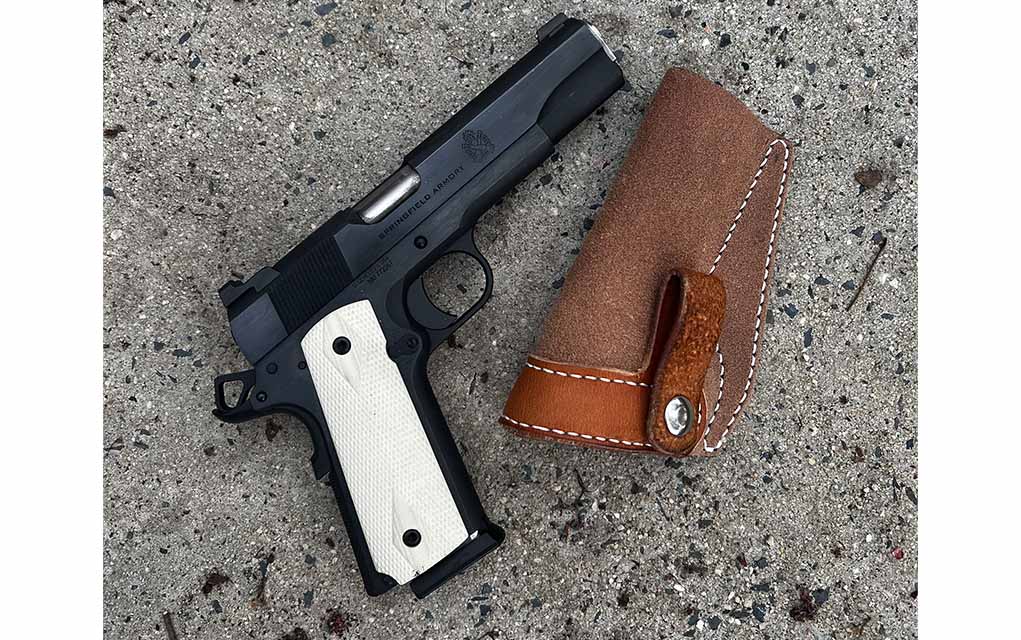

Over a hundred years ago, the legendary John Moses Browning—a genius in business and firearms design—began the development of a semi-automatic handgun for military trials that resulted in several successful designs. Still, the one that the U.S. military would adopt would be the model of 1911 produced by Colt.
It should come as no surprise that a significant contributing factor to the gun’s popularity was that multiple generations of service members came home and bought what they were familiar with, leading to the 1911’s widespread use.
A well-built 1911 truly is a shooting experience to behold. But, like the AR-15, popularity leads to a wide range of offerings. It can’t be stressed enough: Buy quality 1911s. While this may seem snobbish, remember that the 1911 design does not lend itself well to cheap mass production. Because a gun is technically a 1911 design, it is not inherently great.
Start with quality. It will save you time and money in the long run. Where is the line of quality? The baseline offerings from Springfield Armory and Colt are an excellent starting point.
As a good friend of mine (ironically, he’s in the UK gun industry) once said, the 1911 is the embodiment of America’s pistol. I couldn’t agree more with this statement; it’s a gun every red-blooded American should own and enjoy.
Backup/alternate: Browning Hi-Power—The Hi-Power is undoubtedly one of my favorite semi-auto handguns. Some would even argue that it was the natural progression of the 1911 design. You can never go wrong with this classy 9mm semi-auto.
3. Smith & Wesson Model 29 Revolver
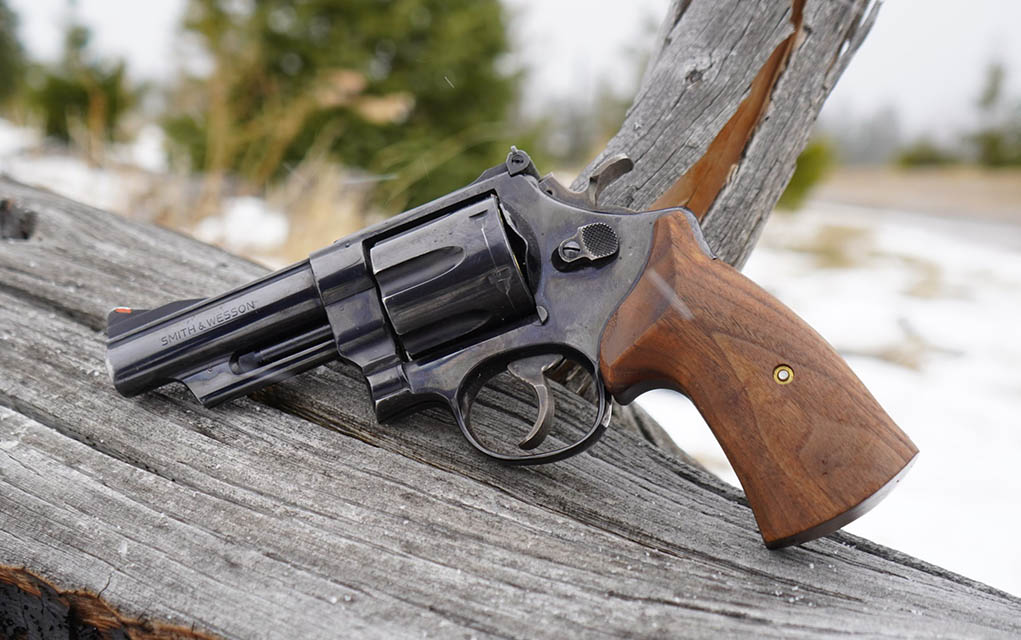

In 1955, a match made in heaven was brokered by the god of wheel guns himself, Elmer Keith. Keith was an Idaho big-game hunter and guide and one of our most influential gun writers. He used his pull to bring about a new cartridge designed around what he believed the current .44 Special should have been performance-wise; enter the .44 Remington Magnum cartridge paired with the new Smith & Wesson Model 29 revolver on the N-frame.
It’s a big gun, easy to control and versatile. Keith was an avid handgun hunter and rancher. The .44 Mag. was designed with his needs in mind. You can do it all with the classic 4-inch barrel configuration (my preferred variant).
While the .44 Magnum cartridge is a reloader’s dream, if you don’t handload, there is a wide assortment of .44 Magnum and .44 Special factory loads commercially available to cover everything from hunting to self-defense. If I’m in the woods or on the water, my Model 29 is on my hip. I wear mine in a Simply Rugged pancake-style holster called the Sourdough. The holster distributes the weight of this massive boat anchor of a handgun. But once you get used to the weight, you will find it a benefit regarding recoil control.
If given the restriction of only being able to own one handgun, a 4-inch blued finish Model 29 would be my choice.
Backup/alternate: Ruger Redhawk—If the Model 29 isn’t your speed and you want to be slightly different, go with the Ruger Redhawk. The Redhawk is beefier, heavier and a bit less refined in the trigger department when compared to a pre-lock S&W. The Redhawk is more robust, though, and its weight can be helpful when shooting heavy loads.
4. Ruger MKIV .22 Pistol
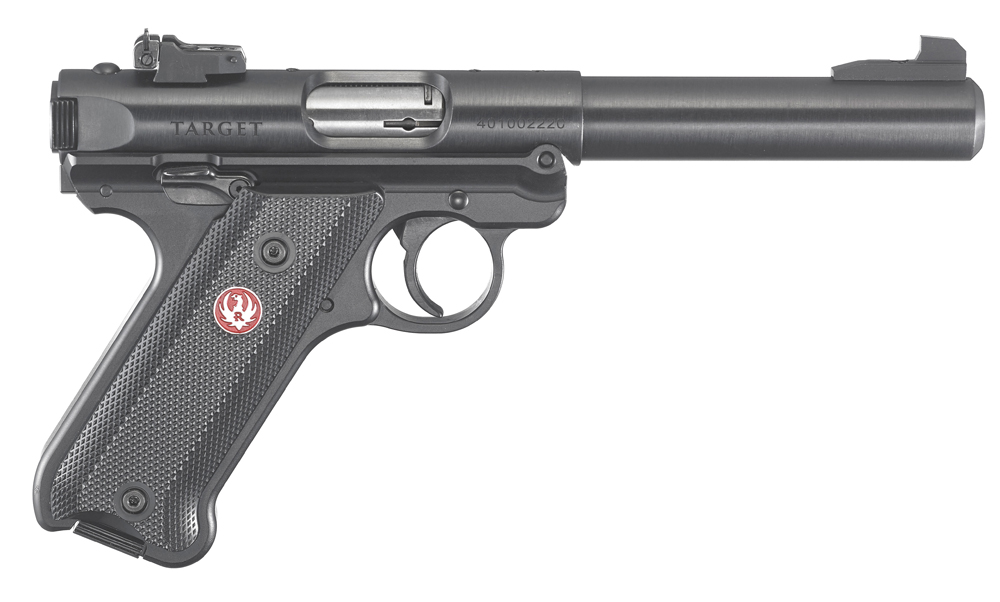

After WWII, prolific firearm designer Bill Ruger entered the American gun scene. He was a fan of the Japanese Nambu pistol and its bolt design. In 1949, he introduced the gun known as the Ruger Standard Auto in .22 LR. The Standard Auto was the first generation in a series of pistols currently in the fourth iteration (Mark IV).
So what sets the MKIV apart from the others? The takedown system. Anyone who has owned a Ruger Standard Auto in the first three generations will tell you it’s an amazing gun with one major drawback: disassembling it requires black magic, luck and a rubber mallet. It isn’t that bad once you learn a few tricks and get used to it, but it certainly was a significant drawback. The latest generation has a button on the back of the frame you push, and the gun hinges open for easy field stripping and cleaning.
The MKIV also has one of the cleanest triggers of any commercially available rimfire pistol today. I love guns that are good to go right out of the box. After properly sighting in an Aimpoint Micro T2 on top of mine, we frequently made hits on a 6-inch gong at 100 yards.
If you live in a freedom-loving state, buy the threaded model and get a suppressor (I highly recommend the Q Erector).
Backup/alternate: Taurus TX22 Competition—The Competition variant is my top pick of the TX22 line as it comes threaded with an optics mounting plate. I will be the first to admit I was not a fan of Taurus for many years, but this is one of the guns that made me a believer that the Taurus of today is an entirely different company putting out high-quality products. I’ll purchase one next for backpacking, as it’s a bit lighter than the Ruger.
5. The Ruger No. 1 Single-Shot Rifle


You won’t find an American-made rifle with more class and style than the Ruger No. 1. Get your pith helmets and tweed field coat ready. The brainchild of Bill Ruger and Leonard Brownell, the No. 1 gave Americans a single-shot rifle that is a mashup between classical British and American gun-making styles. Through the years, it has come in many configurations in stainless and blued finishes and everything from varmint rifles to true big-bore safari guns—all built on the same indestructible falling block action.
I like the No. 1A configuration best, a blued half-stock sporter variant with a beautiful Alexander Henry-style forend and banded front sight. The barrel is of light contour, and it makes for a lovely stalking rifle that makes you want to glass red stags in the Scottish highlands or kudu through the mopane brush.
They aren’t winning any awards in the accuracy department, but some of my Ruger No. 1s are the most accurate rifles I have ever owned. That said, others needed a little love and were picky on ammo. My current No. 1A in .275 Rigby (7×57 Mauser) will shoot an honest 3/4-inch three-shot group all day long from a cold bore with 140-grain Nosler Accubonds. With most other factory ammo, it’s a 1.5 MOA gun. Is it going to beat any accuracy records? Absolutely not! Am I pleased with it, and will it suit my needs? Absolutely yes! What level of accuracy do you expect and need? My No. 1A in .275 Rigby is a stalking rifle for medium-sized game, and I am taking shots 250 yards and closer. For my needs, the rifle works perfectly fine.
Backup/alternate: Browning 1885—The Browning 1885 is equally classic; if having an exposed hammer is more your speed, this is the route you want to go. It’s also one of John Browning’s masterpieces.
6. The Remington 870 Pump Shotgun


If you ever want to experience a pump-action shotgun, buy a Remington 870. With production numbers in the millions, if you ask most people about their first pump-action shotgun, it was likely an 870.
The 870 is the literal definition of a workhorse; it’s so reliable that it’s boring. But this rugged pedestrian reliability has a charm all of its own. I am constantly adding guns to my collection, but one thing has stayed constant throughout my years of wheeling and dealing: I have always owned at least one 12-gauge Remington 870. An 18-inch cylinder bore barrel is an excellent home defense option to complement my defensive carbine and handguns. With a regular 28-inch hunting barrel installed, I give it to every new shooter and hunter who joins me in the field. If a buddy shows up to a hunt without a gun, I hand them an 870.
My advice when looking for one: if you are OK with only shooting 23/4-inch shells, find an older Wingmaster model. The 870 Wingmaster has a lighter receiver and generally a better fit and finish than the Express line of guns. The best part? A used Remington 870 of any variety is generally one of the best values on the market. And if you don’t like buying used, they are back in production. Given its popularity over the years, parts are everywhere and not going anywhere anytime soon. Servicing or swapping out 870 parts will be affordable and accessible for generations.
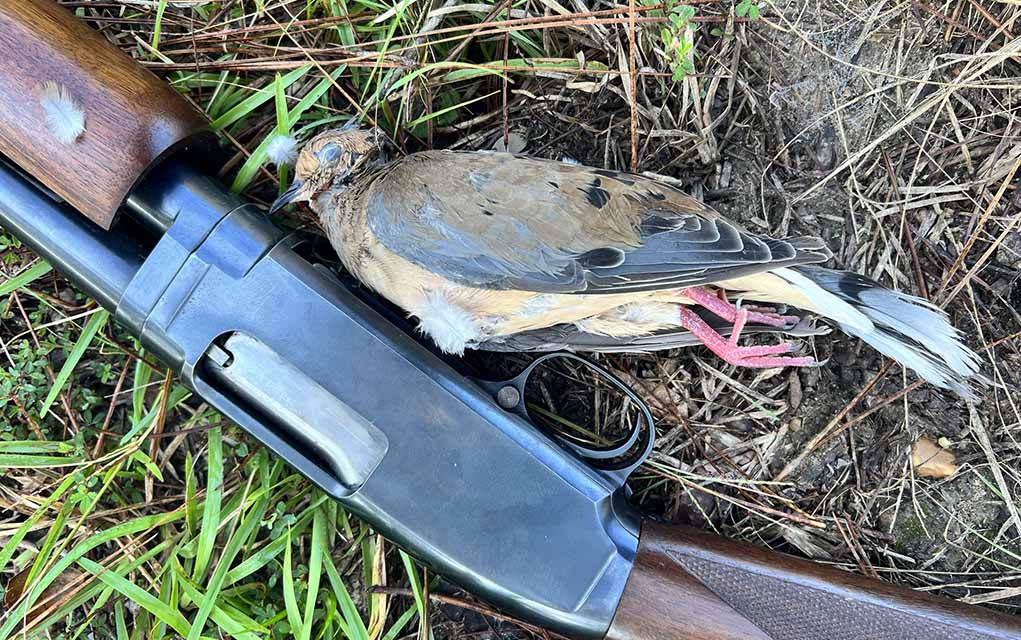

Backup/alternate: Winchester Model 12—While it doesn’t have the aftermarket support of the Remington 870 and hasn’t been in production for decades, the Winchester Model 12 pump action is for those who love the classics. No pump action has a tactile lockup as satisfactory as a well-worn Winchester model 12.
7. Winchester Model 70 Bolt-Action Rifle
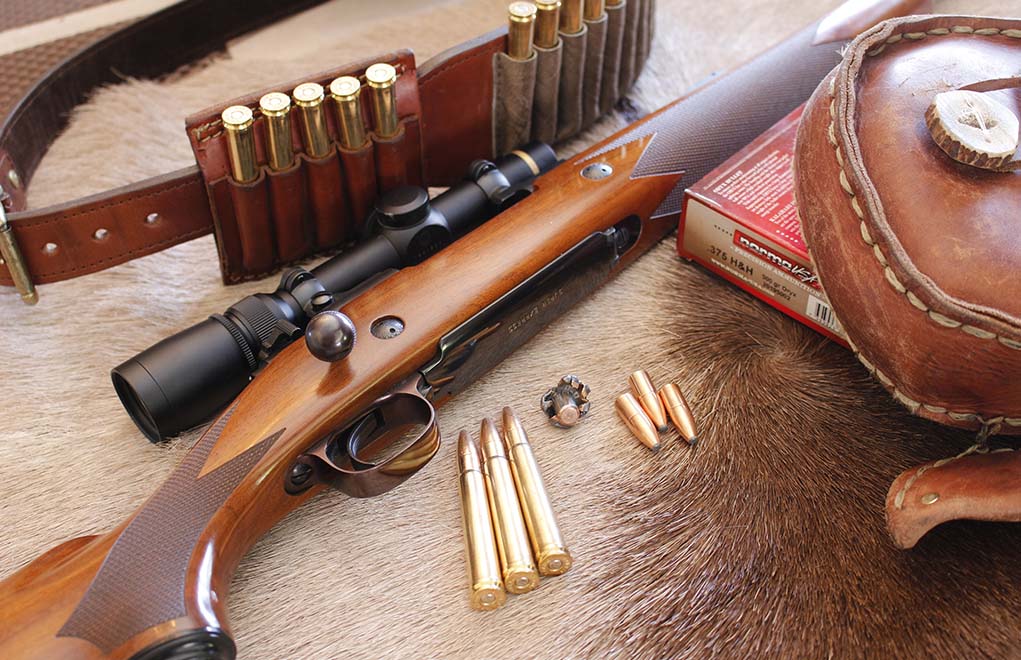

In 1936, Winchester did something extraordinary: It listened to seasoned gun writers and the American shooting community and gave us the best bolt-action American sporting rifle ever produced, the Model 70.
American soldiers returning from WWI got a taste for bolt-action rifles, and Winchester responded in 1925 with the Model 54. While the Model 54 was terrific by the standards of its day, it could use a few tweaks. The main issue was that it was introduced when most American shooters were still shooting iron sights, and the bolt handle’s shape and flag safety did not lend themselves well to optics.
Fast-forward 11 years to 1936, when Winchester introduced the model 70, a very refined Model 54. This time, Winchester hit the nail on the head. The Model 70 was named the “Rifleman’s Rifle” for good reason.
There are three main categories of Winchester Model 70. (Collectors, you can put your pitchforks away as I’m giving the CliffsNotes version of the generations.) The most desirable from a collectible standpoint is the pre-64 series. This is a 1936-1964 production. These rifles had controlled-round feed bolts and are considered the gold standard among American-made bolt guns. Then you have post-’64 push-feed rifles. These went through multiple generations but are generally characterized by the lack of a Mauser-type claw extractor. Next came the post-’64 controlled-round feeds. These are produced today and are called such because though production is post-’64, they have a Mauser-type claw extractor found on the pre-’64 guns.
Literal volumes have been written over the years, arguing the merits and benefits of each series. I will let you in on a secret, though: They’re all great. Even the post-’64 push-feed Model 70s, which don’t hold the serious collector value of the earlier guns, are amazing deals and generally very accurate rifles. The pre-’64 models are a throwback to the best in American gun making, but they aren’t any more accurate than later generations. A current production Winchester Model 70, produced by FN, is on my short list of firearms I can’t wait to snag next.
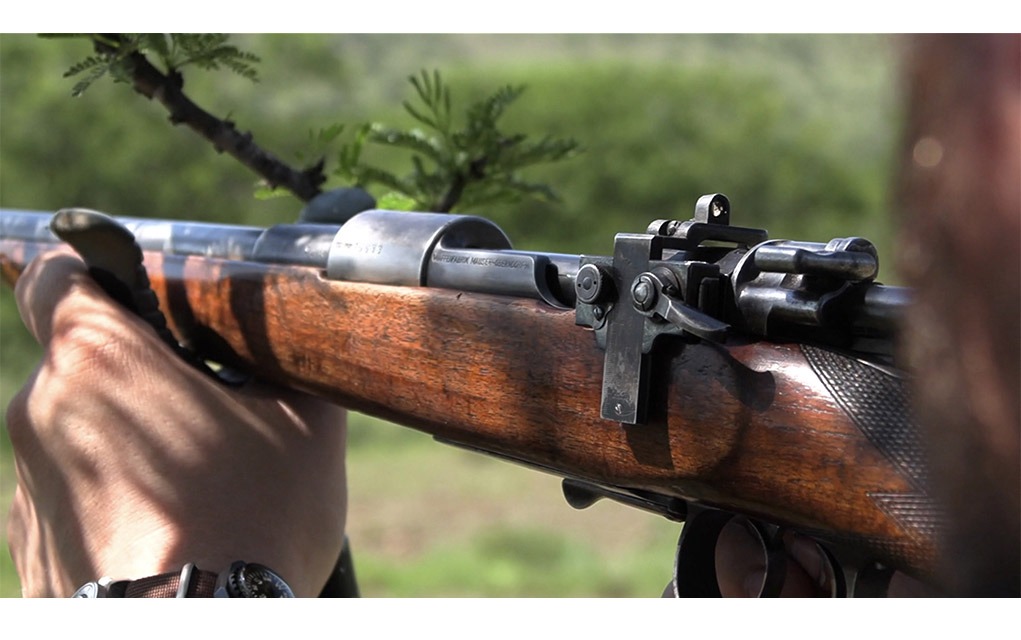

Backup/alternate: Mauser 98—This one deserves an article all of its own, but rest assured, anything pre-war commercial Mauser or postwar FN on a commercial Mauser action is generally a great gun.
8. Browning A5 Semi-Auto Shotgun
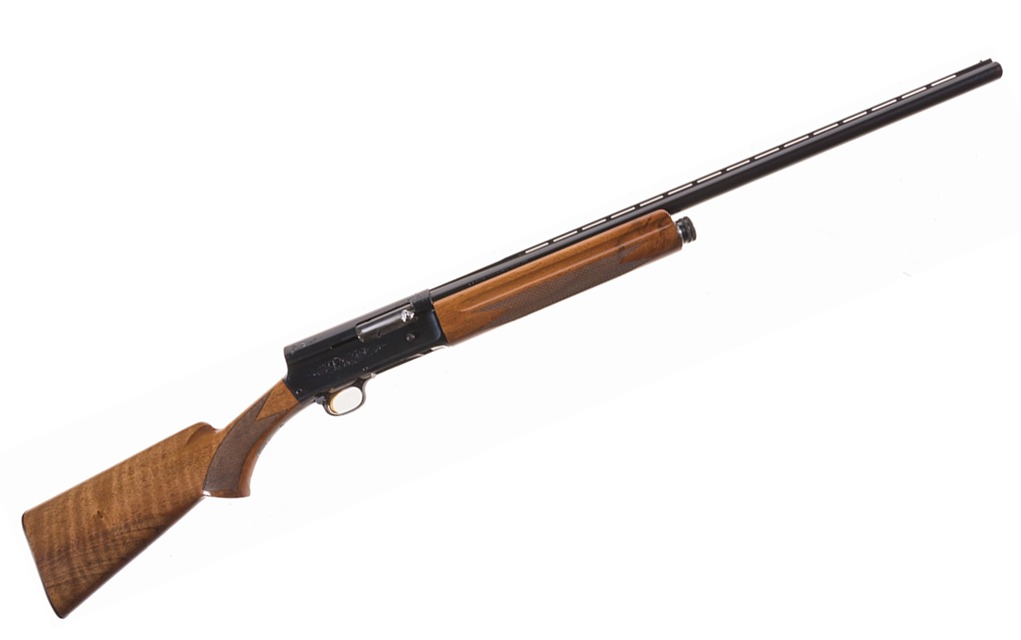

The Browning A5 was in production for almost a century. What’s funny about this shotgun is that it’s the model that put FN on the map. When John Browning offered the design to Winchester, his long-time partner, it declined to buy it, stating that the automatic shotgun would not sell. So, he brought the design to a little-known, small Belgian firearms manufacturer, FN (Fabrique Nationale), and the rest is history.
The A5 is highly recognizable from its “humpback” design, housing a long recoil operating system that oozes classic cool and makes you want to wear waxed canvas in a duck blind. Like many popular shotgun designs, it has gone through multiple iterations and has been produced in 12-, 20- and 16-gauge.
The Browning A5 variant that makes me smile the most is the Sweet 16. If there ever was a true classic American autoloader that defined wingshooting upland birds, this was it. It’s the one I pick for most of my wingshooting, from doves to Canada geese and everything in between. The Sweet 16 sports an actual 16-gauge-sized frame. Sometimes, when a gun company wants to introduce a 16-gauge, it puts a 16-gauge barrel and parts on a 12-gage receiver. That takes away the advantage of running a 16-gauge which, to me, is lighter weight.
Like the Winchester post- and pre-’64 Model 70s, the Browning A5 has two main series—Belgian-made and later Japanese-made. The Belgian ones bring more money and have a higher collector value, but the Japanese-produced A5s are every bit as good, if not better, mechanically. Buy the one you can strike a deal on and take it in the field; they are all great.
Backup/alternate: Remington Model 11—While it was not in production for as many years, Remington had a license to produce the Browning design. These Model 11s do not have interchangeable parts with the Browning A5 but look similar and are rock solid. The 12-gauge models can generally be had for a steal.
9. Marlin 39
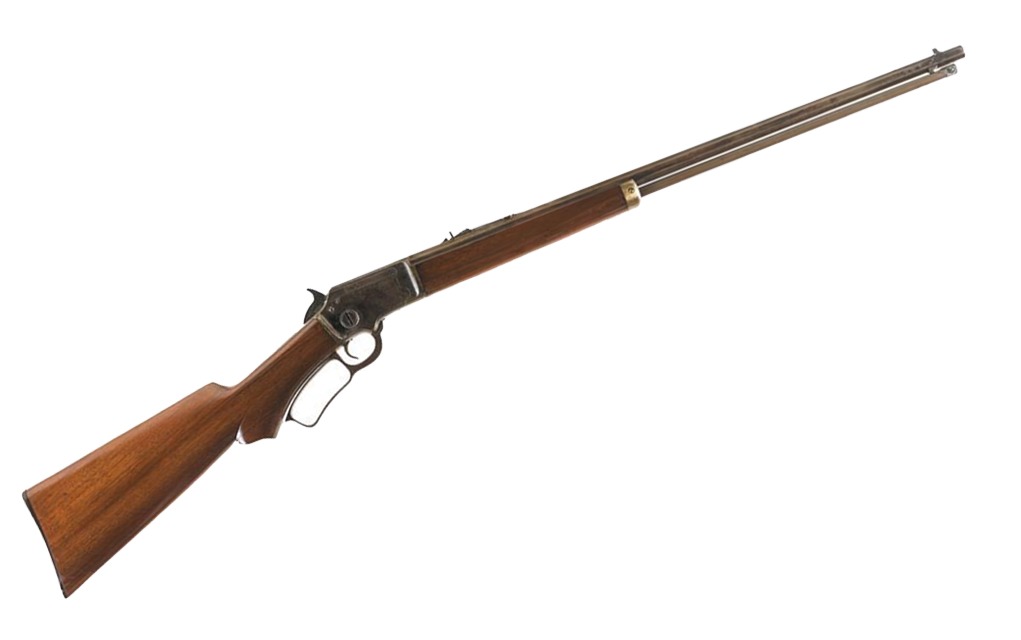

I can remember this moment as clearly as day. I was maybe 11, and my mom brought us into town. Naturally, I found my way to the gun magazines and started reading. I can’t remember the publication or author, but there it was, the Marlin 39 in a featured piece. The photo had a Marlin 39 .22 rifle set against some barnboard with a red plaid hunting jacket, a Case trapper pocket knife, a brass compass, a few traps, and a fox tail. I was immediately taken in by what I read about this classic American rimfire rifle. I had to have one.
Unfortunately, I soon found out that the Marlin 39s have quite the following, but I would not end up with my first one until I was a freshman in college. I then proceeded to hunt small game every weekend I legally could, and it was a constant companion on the trapline and on summer camping trips.
What made this rifle so handy with such appeal? For starters, it was a shooter. I only have a peep sight on mine, but putting 10 shots into a quarter-sized group at 50 yards is easily achievable. The Marlin 39 is not a “youth”-sized rifle. It is a full-sized gun that happens to be chambered in .22 LR. These guns are not lightweight in the standard configuration by any means, but if you are Sasquatch-sized like me, you will appreciate the full size. Working the action feels like you are winding the finest precision pocket watch.
Here’s the best part, it’s a takedown. Remove one captive screw in the receiver, and the rifle breaks in half for easy transport or cleaning. I carry mine in a Skinner takedown rifle bag, and away it goes into the field.
Marlin produced this rifle for over a century before the company’s recent sale to Ruger. I hope Ruger brings it back, as it is my favorite lever-action rimfire ever produced.
Backup/alternate: Winchester 9422—While not a takedown, this alternate gets an honorable mention as it’s a great rifle to add to the collection. The Winchester 9422 is a classic and came in a .22 WMR variant.
10. Winchester 94 Lever-Action Rifle
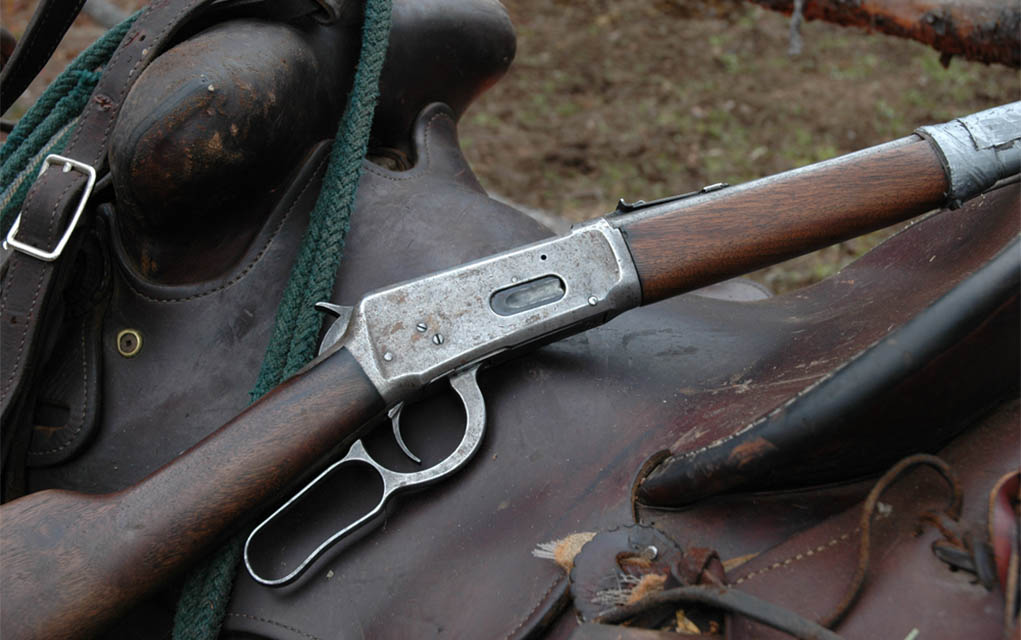

The end of the 19th century was a wild time for gun design. John Browning wanted to make a lever-action rifle chambered in the then-new smokeless rifle cartridges. He used the locking system that was already a success from the 1886 and 1892 models and adapted it into what we now have as the Model 94.
The Model 94 is the quintessential brush gun. The standard 20-inch barrel carbine configuration, chambered in .30-30 Win., has put deer in the cooler for over a century. There is no other rifle I can think of that is as comfortable to carry. If you want to experience a fantastic brush gun that is relatively low recoil, lightweight, handy and quick to shoulder, the Winchester 94 should be the first gun you try.
The 94 was in production until 2006, when Winchester closed its New Haven plant. Luckily for us, Browning, which now owns Winchester, is producing them again at the Miroku plant in Japan, and they are as good as the older ones.
Backup/alternate: Marlin 336—While the Marlin 336 does not have the longevity and Old West mystique of the Winchester 94, it is arguably a better rifle in some regards. That’s especially true if you wish to mount a magnified optic. The Winchester 94 is not forgiving regarding optics mounting options due to the top eject receiver, unless you get the angled eject variant, whereas the Marlin 336 has a side ejection port and a solid top receiver. The deciding factor between these two should be whether you wish to mount an optic.
Conclusion
While you should never restrict yourself to 10 guns, these are the ones you should consider owning and shooting at some point. Remember, they’re best experienced in the field and range. A gun in a safe doesn’t build nearly as many memories as one that gets shot and carried.
Editor’s Note: This article originally appeared in the August 2024 issue of Gun Digest the Magazine.
More Classic Guns:
Read the full article here











